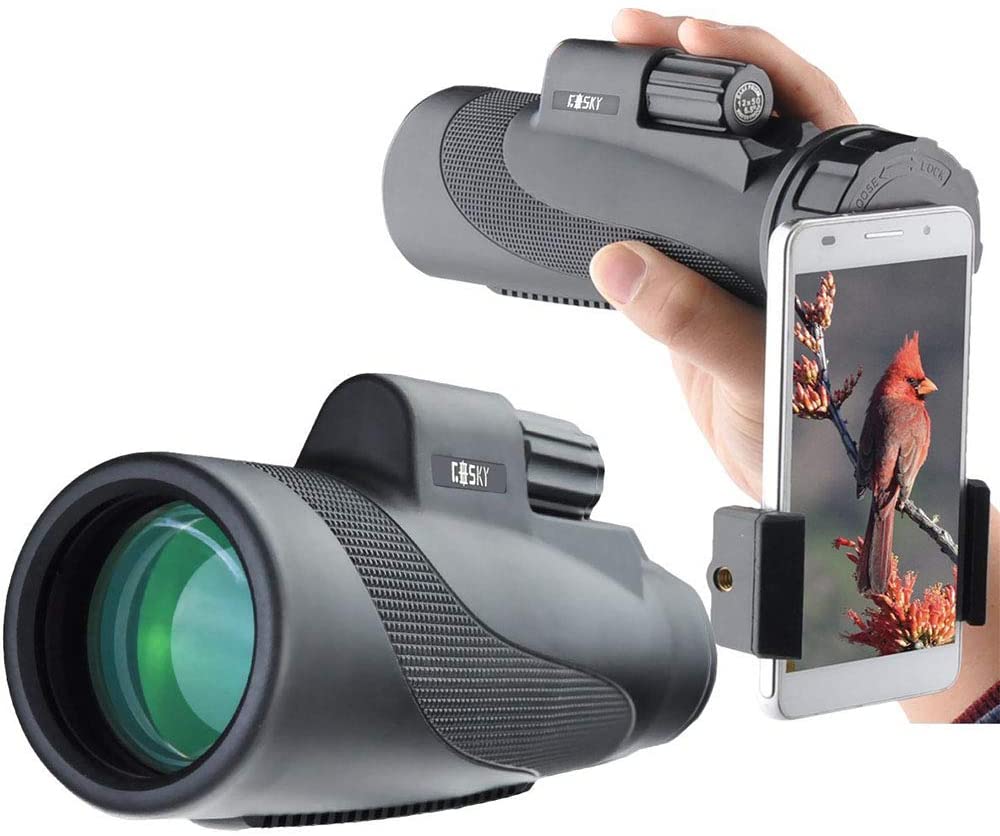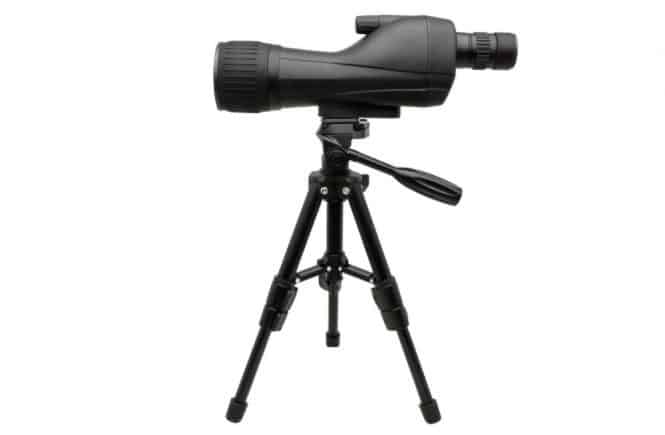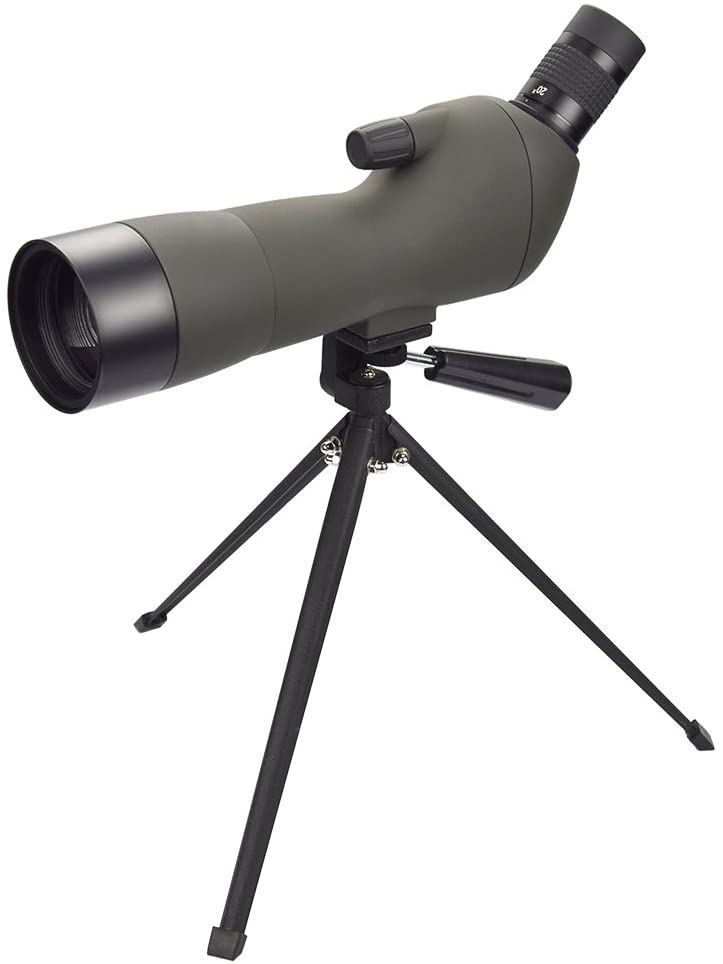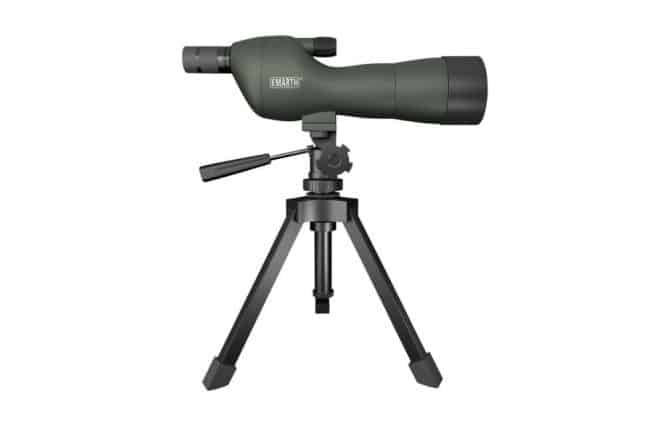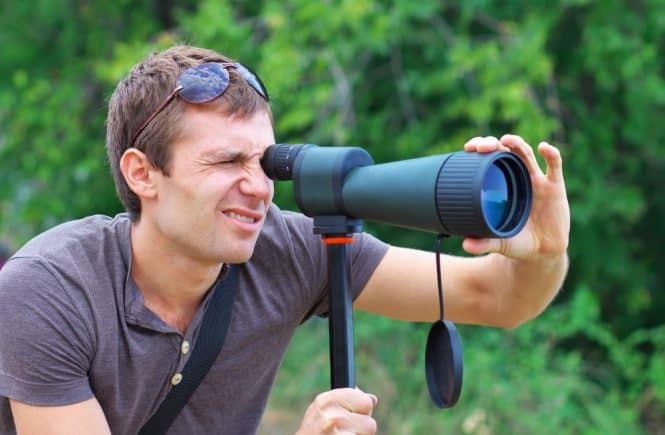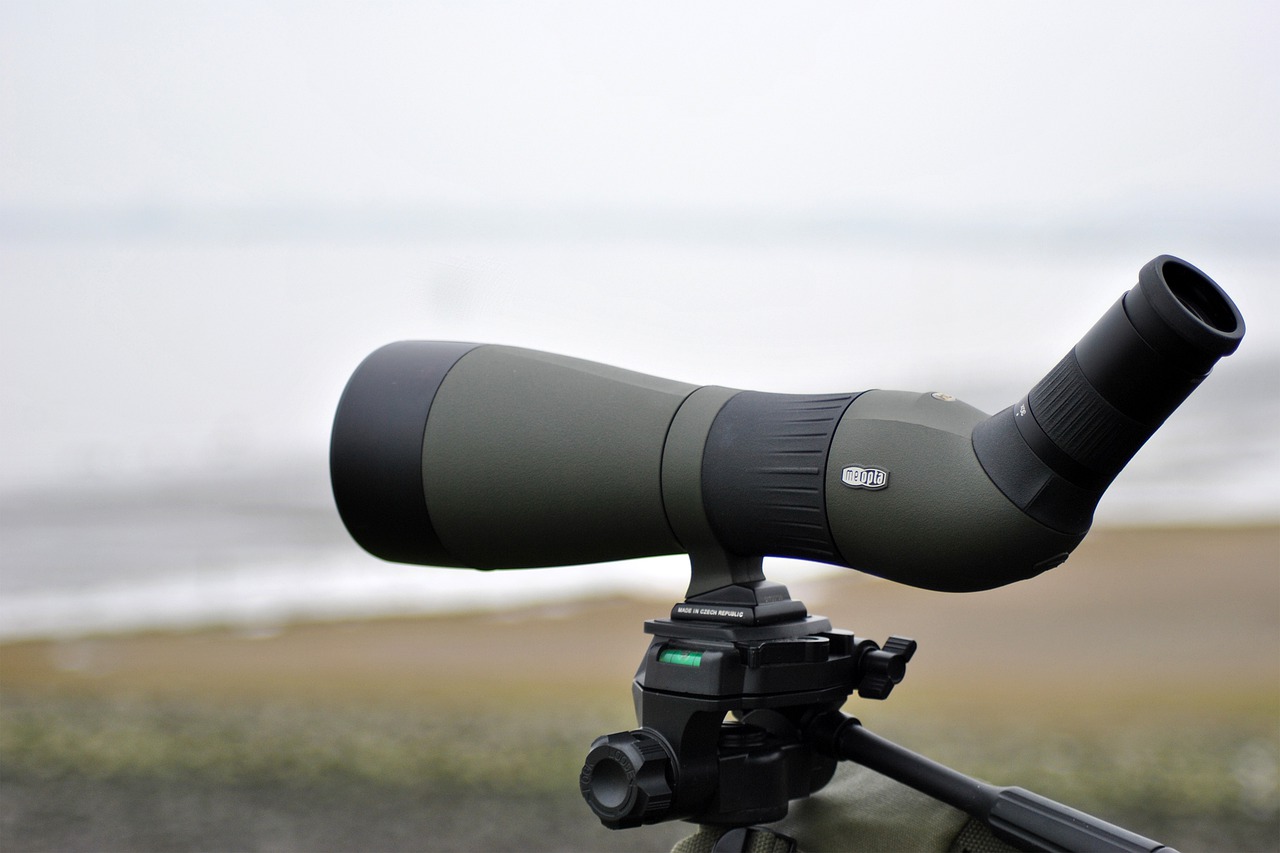
A&W Outlets
The Best Spotting Scope Reviews and Advice
Celestron Ultima 80 20 to 60×80 Straight Spotting Scope Review
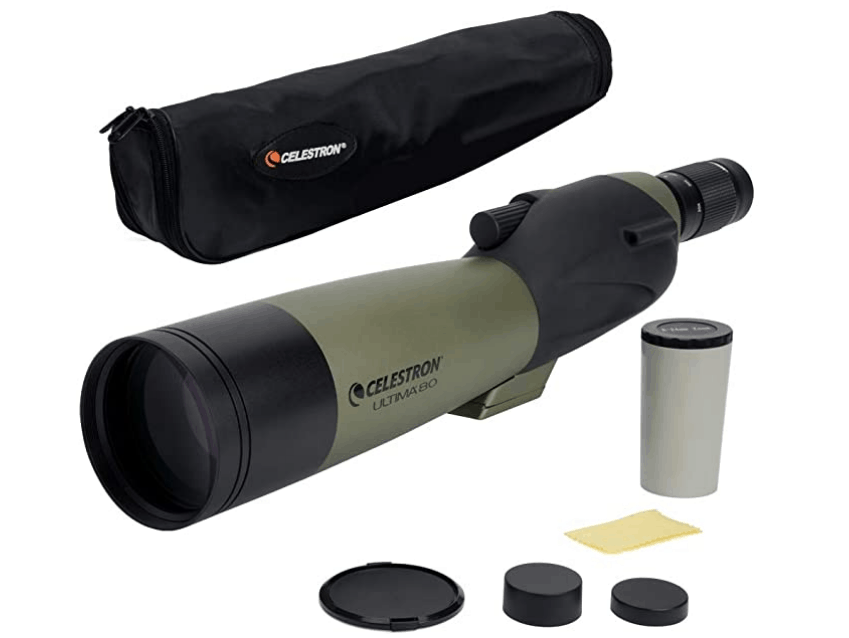
This site contains affiliate links to products. We may receive a commission for purchases made via these links.
Table of Contents
Introduction
To an avid bird watcher, nothing beats spending a weekend in a bird sanctuary admiring birds in flight, watching them with a good spotting scope, and drawing them no matter how inaccurate the outcome may be. Kidding aside, spotting scopes are part of the optical gear that a bird watcher always carries around for easy species identification and fast on-the-spot sketches.
In a perfect birder world, a good spotting scope should have enough magnification to bring out the details of each bird from a long distance. This is particularly important as you don’t want to disturb birds in their natural habitat as 1.) they will fly away, and 2.) they will move beyond your sight.
Other than a spotting scope, a bird watcher would mostly be seen carrying around the following items:
• DSLR camera
• Field guide
• Foldable chairs
• Water canteen
• Trail pack
• Notebook or journal
• Sketchpad
• Pens and pencil
With that said, let’s take a closer look at one of the best spotting scopes on the market: the Celestron Ultima 80 20 to 60×80 Straight Spotting Scope. We will look at its features, pros, and cons, and compare it to another awesome spotting scope on the market so that you’ll know how it fares with other similar products.
Product Overview
 The Celestron Ultima 80 20 to 60×80 Straight Spotting Scope is a flexible spotting scope that comes with multi-coated optical lenses that can zoom in at a 20-60x ratio. It also comes with a T-adapter, T-mount ring, eyepiece cover, eyepiece case, instruction manual, objective cover, and cleaning cloth.
The Celestron Ultima 80 20 to 60×80 Straight Spotting Scope is a flexible spotting scope that comes with multi-coated optical lenses that can zoom in at a 20-60x ratio. It also comes with a T-adapter, T-mount ring, eyepiece cover, eyepiece case, instruction manual, objective cover, and cleaning cloth.
The 80-mm refractor’s aperture offers 50% brighter images compared to previous Celestron models, for better quality images and more detailed photos. The comfortable eyecups and the quick focus knob are convenient to use and require no user manual to adjust them to your desired level.
Features of the Celestron Ultima 80 20 to 60×80 Straight Spotting Scope
Being an integral part of a bird watcher’s gear, the Celestron Ultima Spotting Scope comes with the following features:
Multi-Coated Lens
This spotting scope comes with multi-coated lenses that allow you to capture sharp views under any level of lighting and glare.
Variable Optical Zoom
The telescopic eyepiece of this scope can magnify and zoom in on an object 20-60x.
Quick Focus Knob
Enhance and manipulate the scope’s focus with ease using the convenient focus dial just in front of the sighting tube.
Waterproof
The Celestron Ultima Spotting Scope is waterproof, allowing you to watch birds under any weather.
Soft Carrying Case
The carrying case of the Celestron Spotting Scope is soft and flexible enough to carry more than the scope and its many accessories.
T-Mount Adapter
The spotting scope comes with a T-mount adapter which lets you attach the scope directly onto your DSLR camera, for quick and easy shots.
Eyeglass-Friendly
The Celestron Ultima is equipped with soft rubber eyecups making the eyepiece of this spotting scope eyeglass-friendly and comfortable to use.
Armored Casing
The assemblage of this spotting scope is made of armored plastic which can protect it against abuse while on the field.
The Pros and Cons
Pros
• Well-built and durable
• Convenient to use
• Waterproof
• Nice and clear lenses
• Zooms in with great details
• Rugged design
• Magnification is easy to manipulate
• Easy to assemble and disassemble
• Works well as an attachment to a DSLR
• Distortion-free around the edges when zoomed in
• Tough outer shell
• Easy on the eyes, especially for people wearing glasses
Cons
• Needs sunshade for the objective lens
• Weight is uneven
• Bigger and heavier at first glance
• Carrying case should be tough
• Tips over easily
Comparison
 The Gosky 20-60 X 80 Porro Prism Spotting Scope is another spotting scope that comes with an 80 mm refractor lens like the Celestron Ultima 80 20 to 60×80 Straight Spotting Scope, and it comes with almost the same set of features. The Gosky Spotting Scope comes with the following features:
The Gosky 20-60 X 80 Porro Prism Spotting Scope is another spotting scope that comes with an 80 mm refractor lens like the Celestron Ultima 80 20 to 60×80 Straight Spotting Scope, and it comes with almost the same set of features. The Gosky Spotting Scope comes with the following features:
• Multicoated lens
• Variable 20-60x magnification
• Tripod mount
• Sunshade
• Digiscoping adapter
• Waterproof
• Durable exterior
The Gosky Spotting scope comes with a carrying case that can fit the scope, the eyepiece, and the lens covers, as well as a cleaning cloth and straps. The digiscoping adapter allows you to attach your phone’s camera directly to the scope for faster edits and upload.
The Verdict

Both the Celestron Ultima and the Gosky Porro Prism Spotting Scopes come with greatly similar features, even the variable magnification and multicoated lens are the same. However, the ability of the Celestron Spotting Scope to be mounted directly on a DSLR camera makes it a stand-out. Although you may get the same quality of pictures with the Gosky via a cell phone camera, the camera lens of a DSLR gives more depth, and it allows you to change the other settings to complement the magnification brought in by the Celestron. Pictures would come out more detailed which lets you print them on a larger scale without losing clarity and brightness.
The Gosky Spotting Scope is a little better when it comes to mounting options as it comes with a tripod but the Celestron Spotting Scope can also be paired with a similar tripod for easy handling and a more comfortable feel when using the scopes. The Celestron’s folding eyecap and their soft rubber make people with eyeglasses use them without removing them, but they work within and without.
The last advantage that the Celestron Spotting Scope has is the way that the scope is made. Being a straight scope, allows you to get a fix on your target without having to strain your neck as you look down on the eyepiece if using an angled scope like the Gosky. This also means that it’ll be hard to observe birds from an uphill vantage point as you would have to extend it a bit to get a good look.
The kind of lens and its magnification capability are the top considerations when choosing the right spotting scope as these mean better details and more clarity, which is especially beneficial if mounting the scope directly onto a camera. Additionally, mounting options also play a vital role as it affects how you carry the scope. Generally, larger spotting scopes are better with tripod mounts, while smaller ones can make do with neck and straps.
Latest Reviews
Latest Articles
Follow Us
© 2021 AW OUTLETS
